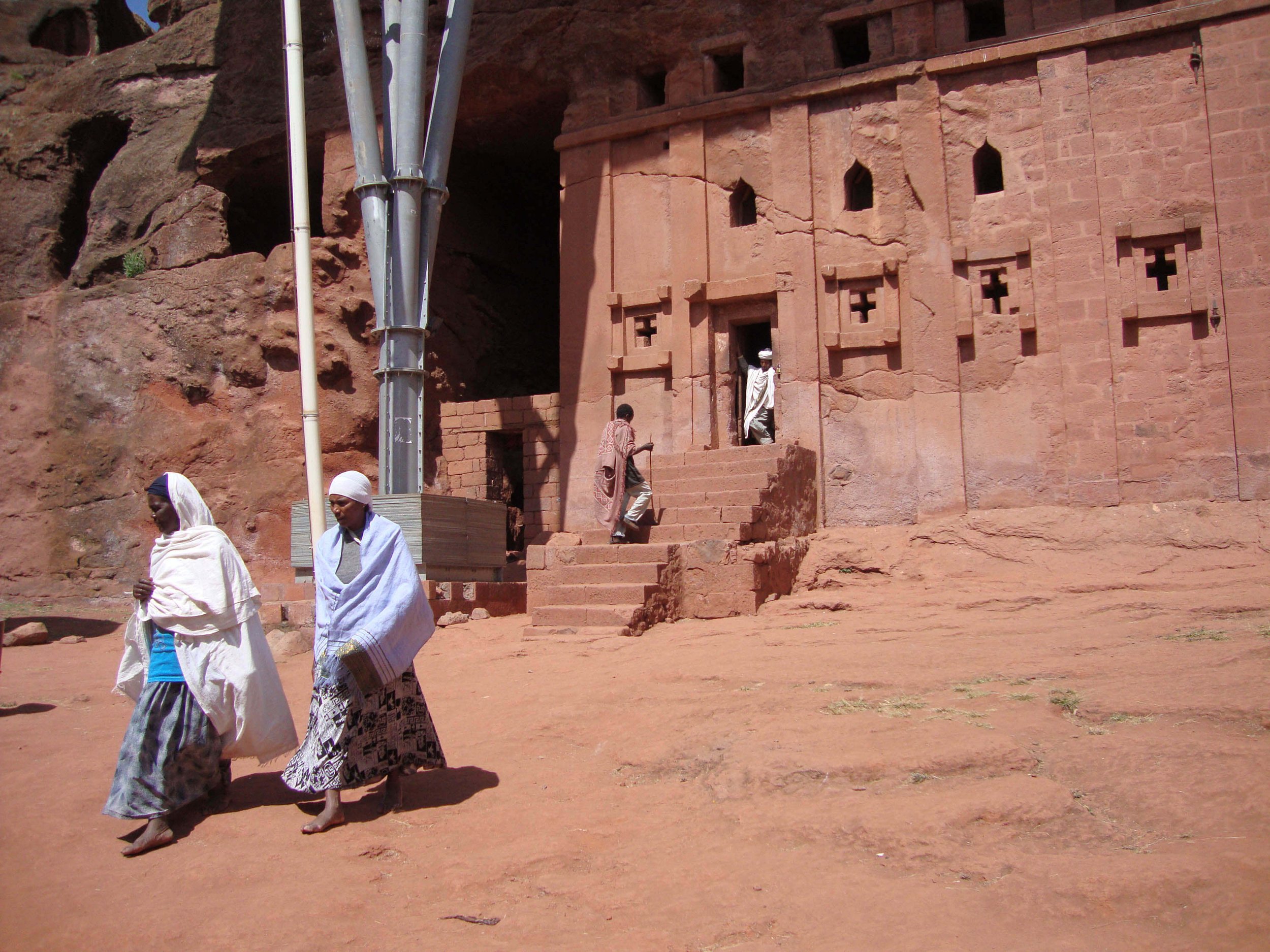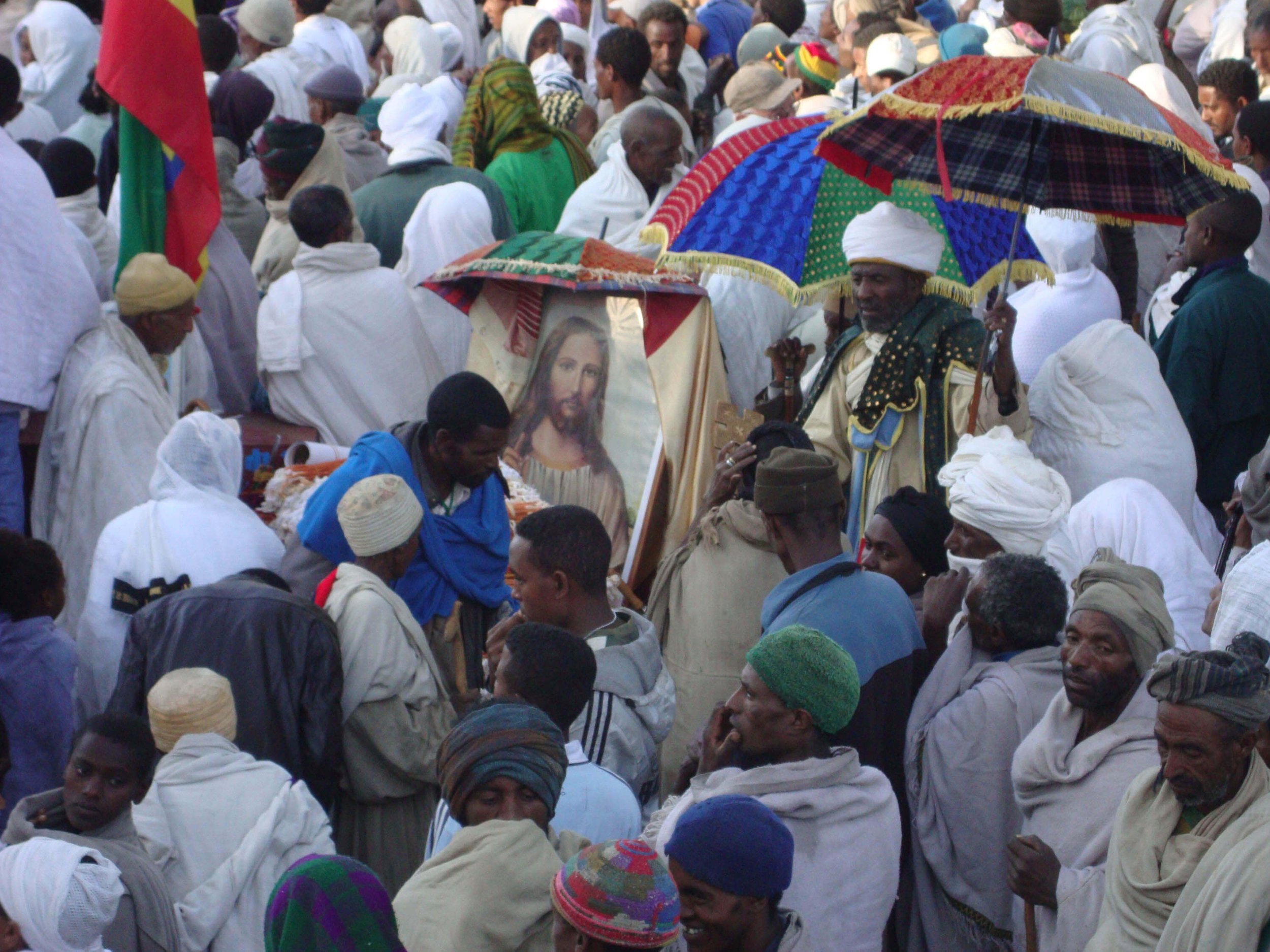
Geography of the Site
Lalibela is located in the heart of the northern Ethiopian’s highlands, 700 kms Northern-West of Addis-Ababa. The town is positioned on the foot of Mount Asatan, on an intermediate level between Abune Yosef Massif (4 200 meters height) and the Tekeze plain (1 800 meters height) crossed by the Tekeze river that reaches the Blue Nile in Sudan.
About 60,000 inhabitants live in the rural and urban areas of Lalibela. In the 1980s, Lalibela was a village that only comprised about 4,000 inhabitants. The economy relies almost only on tourism and agriculture. Patrimonialization and touristic valorization contributed to rapid urban development and have deeply changed the features of Lalibela.
Those last decades, the town was provided with transportation, health, education and touristic infrastructures. With touristic development in the 2000s and 2010s, Lalibela’s urban organization has changed: while residential districts stretched in the countryside, along the main roads, the central area, next to the churches, were step by step dedicated to heritage and tourism. The town welcomed around 50,000 international tourists before the COVID-19 pandemic. The current context has severely hit the economy and the community, dependent on touristic incomes.
Click to explore more - Google Earth
LALIBELA THROUGH MAPS
EVOLUTION OF THE PATRIMONIAL SITE
LALIBELA’S LANDSCAPE

The Churches of Lalibela
The site of Lalibela is the product of a long evolution since the Middle-Ages
Located in the heart of the Ethiopian highlands, the site of Lalibela is composed of eleven churches carved in a monolithic rock. Their creation is attributed to King Saint Lalibela, who reigned over the Christian Kingdom at the beginning of the 13th century and has given his name to the site. The site is the product of a long evolution, starting before the 13th century. with the first galleries digging and underground rooms. After the 13th century, new architectural programs were superimposed on the previous one. It is due to the continuous erosion of the upper part of the rock, both on the roofs of the monument and the courtyards at the foot of the churches. Thus, the site of Lalibela is the product of a long evolution since the Middle-Ages, due to erosion, successive occupation and restoration of the site.
Designed as the transposition of Jerusalem in Ethiopia, Lalibela borrows the toponyms of the Holy Land. King Saint Lalibela, himself, is believed to be buried in the Church of Golgotha. The cohabitation of Holy places and the tomb of the King, who has become a Saint, made Lalibela an outstanding pilgrimage center. The Churches are today one of the most vibrant locations of the Orthodox culture in Africa, welcoming thousands of faithful for major religious celebrations of the Christian calendar.
Bete Emmanuel
PERSPECTIVES OF THE SITE
THE CHURCHES

Inhabited Heritage
Boy playing drums during ceremony
Both a high-place of pilgrimage and a daily place of worship, the churches of Lalibela are served by a clergy of about 1,000 dickens and priests. They host both everyday faithful from Lalibela and its surroundings and pilgrims flocking from all over Ethiopia for Christmas. The churches are constantly occupied, during the religious ceremonies and celebrations, but also during day time. Located in the heart of a small town with about 60,000 inhabitants, the site is also a space crossed by multiple circulations enabled by the networks of cuttings, opening onto different parts of the town. The districts located in the immediate area of the churches have progressively disappeared through successive rehabilitation programs. The churches and its surroundings remain areas of circulation, playgrounds and visit but also camp settlement during the major pilgrimages.
EVERYDAY FAITHFUL
PILGRIMAGES

Fragile Heritage
This living heritage, inscribed in the UNESCO’s World Heritage List since 1978, has always been in danger due to the erosion of the rock. Since the beginning of the 20th century, restoration was led to save the churches. The choices made highlight very different visions of what rock monuments’ restoration should and could be. Since the 1980s, the churches were covered to be protected from the rain. At the beginning of the 21st century, sheet-metal roofs were replaced by shelters. Alternative solutions to the shelters have been designed, but without providing perennial conservation for the monuments.
The main challenge for the heritage protagonists is the conservation of the site of Lalibela, enabling its attendance by the faithful, the pilgrims, but also the tourists.
Bete Maryam courtyard


































